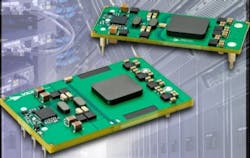Lockheed Martin to build sonar system hardware for U.S. Navy guided-missile and fast-attack submarines
The fast attack boat USS California, meanwhile, is a Virginia-class attack submarine, and is one of the newest, most advanced, and most deadly attack submarines in the U.S. Navy fleet.
The A-RCI program follows a spiral development model that calls for new hardware every even year, and software upgrades every odd year. Lockheed Martin will do the work in Manassas, Va., and Clearwater, Fla., and should be finished by 2018. System upgrades are fielded in 18 to 24 months increments, allowing the government to take advantage of commercial information technology, Lockheed Martin officials say.
"By adapting commercial technology in an open architecture environment, the program rapidly delivers capability to the submarine fleet at a lower cost than a unique custom-built development," explains Jack Gellen, Lockheed Martin vice president of anti-submarine warfare and integration programs.
Lockheed Martin will do the work on this contract modification in Manassas, Va., and in Clearwater, Fla., and should be finished by April 2014.
For more information contact Lockheed Martin MS2 online at www.lockheedmartin.com/ms2, or Naval Sea Systems Command at www.navsea.navy.mil.
